Three years ago, Verily — then a division of Google X — unveiled its Baseline Project, a collaboration with Duke University and Stanford University to collect health data from healthy people to get a sense of what “normal" looks like. Earlier this year, the group began the process of enrolling 10,000 healthy people, over the course of four years. Researchers will collect genetic data, blood samples, medical images, and other information from the study participants.
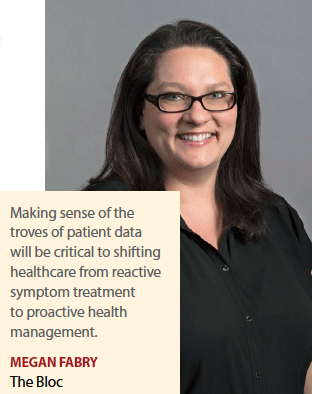 Information will also be collected from phone surveys and from sensors in the Study Watch, a sensor-packed smartwatch available only to study participants. The studies are starting in the San Francisco Bay Area and North Carolina and once completed, there will be a database of anonymized data that researchers — including those from the pharmaceutical industry — will have access to.
Information will also be collected from phone surveys and from sensors in the Study Watch, a sensor-packed smartwatch available only to study participants. The studies are starting in the San Francisco Bay Area and North Carolina and once completed, there will be a database of anonymized data that researchers — including those from the pharmaceutical industry — will have access to.
This gargantuan undertaking is a perfect example of how the healthcare ecosystem of the future will work using technology and data to create better health outcomes for patients. The connected patient is playing a huge role in driving this shift to a value-over-volume commercial model.
“There are many significant issues in the healthcare market today, but few are as important as the role of data in managing patient health," says Chris Cullmann, head of digital, Ogilvy CommonHealth Worldwide, a WPP Health & Wellness company. “More specifically, access to patient data. Having additional and expanded datasets can provide physicians with critical information required to study disease progression and treatment options."
Quantifying real-life patient outcomes through the use of digital technology enables more efficient healthcare interventions than former approaches. The pharma industry is learning that monitoring behavior-driven outcomes helps to maximize product impact in the real world, and companies have begun partnering with behavior analytics companies and patient data collection agencies to tap into the data being collected.
According to Ido Hadari, CEO of Treato, a data analytics company, this type of patient focus for pharma was a novel, futuristic concept just a mere three years ago, but today, it’s considered “a pillar in every life-sciences and healthcare company." Mr. Hadari was quoted in the Deloitte UK’s report, Pharma and the Connected Patient, published earlier this year.
According to the Deloitte report, healthcare is being transformed by many forces, not least of which is an aging population, the need for cost control, health technology advances, and more informed, connected patients.
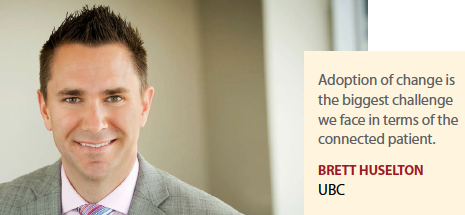 As pharma moves from simply engaging with patients to becoming more patient-centric, both the opportunities and the challenges of connecting with patients increase.
As pharma moves from simply engaging with patients to becoming more patient-centric, both the opportunities and the challenges of connecting with patients increase.
“As the Triple Aim theory goes, increasing patient engagement will lead to better overall population health outcomes, and has been identified as a key next step in lowering net costs over time," says Megan Fabry, senior VP, patient strategy, The Bloc. “Connected health advocates claim that this shift will be fueled by patient empowerment — and that empowerment is achieved through better access to comprehensive health data, including medical records, medication tracking, and nutritional and lifestyle monitoring."
A connected patient is far more likely to be motivated, demonstrate improved adherence, and be proactive in the management and prevention of long-term diseases such as hypertension or hyperlipidemia. As this shift from reactive to proactive health management occurs, relationships between patients and their healthcare providers and care teams can be improved — and in fact, may actually create a better relationship between the patient and his or her health insurer.
“In some cases, large health plans like Aetna are even considering underwriting the cost of connected tools such as the Apple watch," Ms. Fabry says. “Ultimately, increased patient accountability will drive higher expectations — with perceived value of proactive health solutions driving decisions more than just the benefits of a drug itself."
According to a Strategy& report, 2017 Pharmaceuticals and Life Sciences Trends, advances in digital and medical technology are allowing pharma companies and healthcare providers to access patient data seamlessly, in real time, and with little inconvenience for patients. An array of tools can be combined with online portals and mobile apps to foster better, more immediate communication. These include newly approved equipment such as miniature implants, vital signs tracking devices, remote monitoring biosensors, and noninvasive diagnostics. Some pharma manufacturers are also developing smartphone apps to stay in 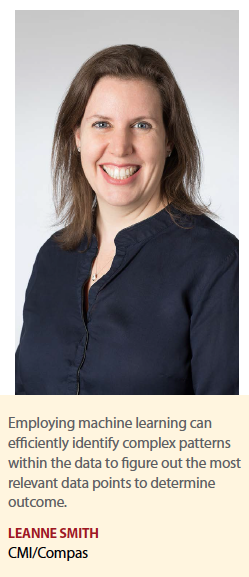 touch with patients, survey them daily about their pain levels and other symptoms, and remind them of their prescribed medication schedules. These apps can also be used to track the progression of a disease or recovery and help healthcare companies better understand patient needs.
touch with patients, survey them daily about their pain levels and other symptoms, and remind them of their prescribed medication schedules. These apps can also be used to track the progression of a disease or recovery and help healthcare companies better understand patient needs.
Looking toward the future, digital technology will enable healthcare 24/7, and will start wherever the patient is located, which may not necessarily be in a doctor’s office, clinic, or hospital. Sensors, wearables, trackers, and other remote devices will enable “healthcare everywhere." This digital ecosystem provides an opportunity for pharma to get to know its consumers and use that information to develop more effective strategies.
“Technology gives us the best window into the patients’ world," says Tim Davis, VP of digital patient solutions, ERT. “It provides data that give us greater insights into how patients are managing when they’ve got the rest of their life to contend with, like getting the kids ready for school, going to work, as well as dealing with a disease, or maybe multiple diseases at the same time. These aspects of a patient’s life are fundamental to understanding health outcomes."
With healthcare delivery systems taking on greater accountability for the costs and outcomes of patient populations, providing patients with vital tools to support their ability and willingness to manage their condition becomes even more critical. When patients use digital tools for their medication management, they build value by taking an active role in their own treatment and generate data that can provide insights into their behavior beyond the clinical setting.
“Access to real-time patient data allows for focused feedback to both patients and providers, helping them stay on track with the care process and lowering the need for readmission," says Jon Michaeli, executive VP of marketing and business development, Medisafe.
To be truly patient-centric, pharma must continue to be open and transparent, sharing data, communicating with both the provider and the patient communities, says Vera Rulon, founder and president, Tir Health Advisors.
“While the fear of regulatory scrutiny is real, continued work to surmount this challenge is paramount to letting data help drive new treatments through collaboration with both patients and their providers," she says.
Challenges Ahead
According to the Connected Patient Deloitte report, consensus is growing around the benefits of a digitally enabled patient-centric ecosystem. A 2016 study of industry stakeholders found that 68% of participants believe patient centricity is a key business driver for using digital health. However, the pharma industry faces many challenges moving in this direction. According to Deloitte, regulatory uncertainty, reluctance to abandon a product-based culture, and data safety and privacy concerns are just a few.
Managing the vast amount of data that need to be deciphered to glean valuable insight is also a challenge, but perhaps not the biggest one, our experts say. There are also hurdles around defining meaningful KPIs, moving beyond the pilot phase, and retaining long-term patient engagement.
“I don’t think that deciphering data and gleaning valuable insights are the biggest challenges our industry faces," Mr. Huselton says. “Those challenges are practical, logistical, and surmountable. I think adoption of change is the biggest challenge we face in 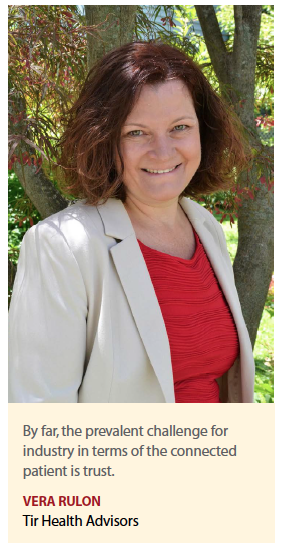 terms of the connected patient. Change is not easy from any perspective. Our industry is slow to change and adopt new practices, particularly after many attempts that were not successful using less behaviorally focused practices."
terms of the connected patient. Change is not easy from any perspective. Our industry is slow to change and adopt new practices, particularly after many attempts that were not successful using less behaviorally focused practices."
Another hurdle Mr. Huselton sees as problematic is the lack of bold programs that use the data in a way that clearly demonstrates patient value, drives clinical outcomes while informing the product safety profile, but also puts the information into context in a manner that clearly shares the value for each stakeholder framework.
“If the evidence package is balanced, and able to address clinical, safety, humanistic/burden, access and economic issues, the organizations with a bold plan to utilize real world data — enriched by direct-to-patient, healthcare engagement apps — will be front-runners in their negotiation and position with regulatory and market access decision makers," he says.
“Making sense of the troves of patient data will be critical to shifting healthcare from reactive symptom treatment to proactive health management," Ms. Fabry says. “The industry has attempted to create smart data sets by segmenting cohorts based on demographics and other health metrics to assist in creating predictive models. But with more and more data aggregation and integration companies coming onto the scene, cross-correlations can now be made to inform health recommendations at the individual level. We will see these methodologies taking more of a role in driving change and innovation across the industry."
Employing machine learning can quickly and efficiently identify complex patterns within the data to figure out what the most relevant data points are to determine the outcome, says Leanne Smith, VP, insights and analytics, CMI/Compas. “Machine learning does not need predefined patterns, but will be able to pinpoint what is and what is not working to help better reach, educate, and communicate to the appropriate audience segments," she says. “Assuming companies are able to overcome the hurdle of having good data governance to manage the data and ensure it is usable, understanding the desired outcome and the measurement of that outcome will help distill the appropriate data points for analysis."
At the end of the day, Mr. Davis says, managing patient data should not be a problem for pharma. Having worked with big data in clinical research and discovery for decades, pharma is well-accustomed to working with millions and millions of rows of data.
“The larger challenge now with regard to how pharma can participate in connected health is about moving from pilot programs and getting apps to the point of being prescribed as a standard with the actual medication," Mr. Davis says. “For example, a patient is prescribed a new medication and an app to download, and his or her data will get shared back to the physician, payer, and the pharma company. Regulatory issues are always a concern when it comes to scaling up, but I do believe pharma is heading in that direction."
Focusing on the correct key performance indicators can also be a struggle, as it is easy to get focused on traditional metrics, like how many times a patient-centered app is downloaded. Mr. Davis suggests focusing on the program objective, understanding 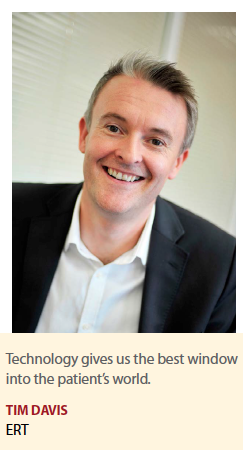 what information will be helpful to stakeholders, and identifying relevant metrics. For example, instead of concentrating on the number of downloads, perhaps focusing on what patients viewed, or how long they viewed it, is more important.
what information will be helpful to stakeholders, and identifying relevant metrics. For example, instead of concentrating on the number of downloads, perhaps focusing on what patients viewed, or how long they viewed it, is more important.
“I’m interested in how long the patient used the app for — it’s about stickiness," he says. “We want to know if people are coming back and if the material they’re reviewing is relevant. This is the long-term value. It provides insights on what will encourage a patient to renew that prescription, continue on treatment, or stay with a weight loss program. Aligning your KPIs to these objectives is very important."
Mr. Michaeli agrees that to decipher data for meaningful insights, pharma first needs to integrate more nuanced data collection solutions.
“With adherence solutions, pharma can reach their patients in real time, gathering information without a lag in self-reported data, and see the instant effects of their interventions," he says. “The significantly expanded pool of data can drive more accurate conclusions about patient behavior and outcomes."
However, the major challenge for the pharma industry with regard to the connected patient in his opinion is to keep the patient using the adherence tool.
“Many existing digital solutions used by pharma are medication or condition specific and limit the value-add for the patient, thereby increasing the chance of patient drop off," he adds. “Data cannot be gathered if a patient does not use the appropriate tools, just like a medication does not work if it isn’t taken."
Privacy for patients, both from a federal protection standpoint and from patients themselves, also stands up as a long-term challenge to digitizing and making accessible patient data, Mr. Cullmann says.
“Patients are becoming increasingly more active about their conditions and how they are managing the release of their own data to clinicians and patient advocacy groups," he says. “The transfer of this data is very important both to furthering the advance of science and to helping liberate the concept of value in healthcare as something that can be more clearly articulated through access to data."
However, data are very hard to make anonymous. This is compounded for rare disease or treatments where there are smaller patient populations and ironically, this is where data are most critically needed.
“Patients and healthcare must advocate for the timely capture and distribution of such data and its application in daily medicine and large-scale initiatives," Mr. Cullmann says.
Privacy concerns will continue to pose a challenge for now, but as machine learning becomes smarter, data sets integrate and move to the cloud, and patients provide more information via connected devices and wearables, the move to personalized evidence-based medicine will become a reality, Ms. Fabry says. Until then, to make the leap to true connected health, data scientists, statisticians, and HCPs will need to continue working hand-in-hand to ensure best practices and guidelines are being adhered to, she says.
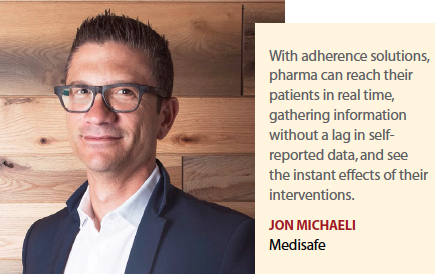 To succeed, pharmaceutical and biotech companies must become more assertive in identifying the role of patient data outside of their trials and the behaviors exhibited by prescribing physicians that can help yield large changes in patient care, outcomes, and overall value provided to patients and caregivers.
To succeed, pharmaceutical and biotech companies must become more assertive in identifying the role of patient data outside of their trials and the behaviors exhibited by prescribing physicians that can help yield large changes in patient care, outcomes, and overall value provided to patients and caregivers.
“Claims data and prescribing habits are extremely well documented, and the manufacturing sector can now begin to leverage machine learning and artificial intelligence engines with massive data sets of physician prescriptions and patient response to help clarify opportunities and better care for our patients," Mr. Cullmann says.
Taking a big picture view, Ms. Rulon says the industry’s reputation is also a challenge for patient use of pharma-created digital tools, as it is important to build trust for sharing data.
“By far, the prevalent challenge for industry in terms of the connected patient is trust," she says. “Reputation, privacy, and security issues, and health literacy bubble up to the top as part of the trust concerns."
According to the Deloitte study, while pharma is creating more mobile apps year over year, there is still trepidation: only 30% of survey respondents are willing or somewhat willing to share health data with pharma and only 32% trust pharma apps.
“Connected health technologies collect the personal health data that pharma will need to advance treatments and ensure safety and efficacy," Ms. Rulon adds. “By addressing trust issues people may be more willing to share their data for research."
“The collection, curation, and management of patient data is achievable, but it will require work," Mr. Cullmann concludes. “It is a challenge that once fully implemented will bring normalization and curation of patient health data en masse."(PV)
~~~~~~~~~~~~~~~~~~~~~~~~~
Strategy&: 2017 Pharmaceuticals and Life-Sciences Trends
Pharmaceuticals and life-sciences companies are experiencing a wave of competing challenges as part of what could be called the New Health Economy. They include consolidation among providers, especially hospitals, intended to produce efficiency gains; the changing demands and expectations of patients, increasing cost pressures from payers leading to calls for pricing reform; and the declining autonomy of the individual physician as rule-based, protocol-driven care becomes ascendant. The resulting healthcare system will focus on paying for the value rather than the volume of medical care; in other words, it will be a more consumer-facing industry.
Pharma companies need to find new ways to define value that resonate with four stakeholder groups. Thanks in part to social media and advocacy groups, patients are becoming much more active in making their voice heard. Their impact is even extending into drug development. Initiatives such as the FDA’s Patient-Focused Drug Development program coordinate meetings with patients and their families to discuss how disease and medication affect their lives and to consider potential new drug treatments that would be valuable to patients.
~~~~~~~~~~~~~~~~~~~~~~~~~
The Need For Speed
Reports show that patients increasingly want to be partners in determining their healthcare strategies and lifestyle choices, joining with providers in making informed decisions. Valid decisions are dependent on clear and timely demonstrations of drug outcomes and efficacy by pharmaceutical companies.
Analyzing patient data and effectively using it to improve outcomes requires some speed; we asked experts how pharma can position itself to move fast enough to stay ahead of the curve.
Tim Davis
VP of Digital Patient Solutions, ERT
Staying ahead of the curve is a challenge that can be met by using a very agile approach to development. Similar to lean startup and minimal viable product development, no one wants to create something that takes a long time to build, or even a longer time to be approved, and then not be available until long after the market has changed.
In this case, teams should look to identify what key objective needs to be demonstrated, and not do more than that. Is it a new drug coming into a very crowded market space, is it a drug that’s been around for a while and it’s trying to stop other competitors coming in to the market, or do we need to demonstrate efficacy at a certain price point? Whatever the key point is, focus on that and don’t bite off more than you can chew.
A new approach today is to learn from experience, so programs can be tweaked along the way. They don’t have to be perfect out of the gate.
Megan Fabry
Senior VP, Patient
Strategy, The Bloc
The truth is, the idea of speed is probably the most challenging to solve right now. Bringing a nimble turnkey solution to pharma will be no easy feat. First, there is a lag time in policy and treatment solutions impacting the industry. The majority of data today are aggregated and protected under HIPAA, so pharma’s ability to respond in real time is significantly hindered. Then, there is the technology itself. While the U.S. healthcare industry has long been behind the 8-ball when it comes to leveraging innovation to manage patients, finding a standardized platform has proven next to impossible. EMRs, which were designed to automate patient records, are fragmented and disparate, so HCPs are still left without a comprehensive picture of the patient. Until the challenge of interoperability is solved, HCPs are left with systems that do not communicate, resulting in data that must be correlated manually.
Additionally, not all HCPs are open to adopting new technology, especially platforms and strategic approaches that have yet to be proven to significantly improve patient outcomes. This is partly due to lack of training on the platforms, but also the scale and pace of changes. I am optimistic that we’re on a trajectory for better integration, but we’re still a long way away from it becoming a reality for the mass majority of patients.
Brett Huselton
VP, Commercial Strategy & Opportunity
Development, UBC
One solution is implementing something we call hybrid study designs that combine real-world data with patient-reported outcomes. Real-world data is getting wider, more connected, and rapidly enriched. Having these patient data linked together from a wide variety of sources, we can reconcile what is often a gap between a patient’s perceptions and his or her actual behaviors.
For example, in a recent study, we piloted a mobile app designed to better inform patients of their condition and to provide motivational messages encouraging healthy practices in a patient’s daily life, including medication adherence. Using the patients’ pharmacy claims data, we examined any changes in the number of medication refills prior to using the app compared with the 12 weeks when they were in the study. Both the technology designers and the product brand managers used the data collected to improve the app’s launch version.
As it relates to speed, the good news is that these research approaches are less about enroll-and-follow principles, which can be time-consuming, versus a very strong and sound analytical approach to securing the correct data, from the correct systems, linked across the cohort in an intelligent manner.
The latter approach can ensure that the patient pathway is rapidly assessed and meaningful information is available in a shorter period of time, making the cycle from launch through insights much more rapid than more traditional means. This further allows brand teams and managed markets teams to address patient specific feedback much more quickly than before. Data availability, legislative agendas with respect to interoperability, and privacy issues are quickly becoming more easily managed to facilitate this shift in the market.
Jon Michaeli
Executive VP of
Marketing and Business Development, Medisafe
Using data to move quickly enough to improve outcomes is predicated upon access to meaningful insights. Currently, many pharma companies are relying on focus groups and lagged data, such as monthly refills, to draw conclusions on adherence to their products. Under continued pressure to clearly define the value of their products in real-world settings, pharma needs to seize available real-time data opportunities, which will allow them to guide decisions on where to invest their dollars.
Furthermore, many payers are now entering risk-sharing agreements with pharmaceutical companies. With this emerging shift in the reimbursement landscape, healthcare stakeholders have an incentive to compile and exchange big data more readily. If payers do not have access to outcomes information, for instance, they will not be able to determine the appropriate reimbursement levels. And if providers are not able to demonstrate effective outcomes, they may see shrinking levels of reimbursement and volume.
Vera Rulon
Founder and President, Tir Health Advisors
Clinical trials are becoming more difficult to conduct given costs, challenges with recruitment, and the increase of the use of communication technology by participants. In a report from McKinsey titled How Big Data Can Revolutionize R&D, there are three challenges outlined that pharma must overcome to achieve big data transformation in clinical trials — and in my view other areas within the pharmaceutical industry. First, organizational silos need to be broken down so that data can be leveraged across brands and therapeutic areas. Second, in the area of technology and analytics, systems need to be connected and analytical talent brought in that can rationalize the data. Finally, mindsets need to change.
With regard to mindsets in R&D and beyond, the fear of increased interactions and scrutiny by regulators is real, however in my view, the industry needs to get beyond this and focus more on learning from entrepreneurs and digital health vendors as they are more quick to produce innovations. These partnerships/collaborations can produce a meeting of the minds: digital health vendors contributing disruptive thinking and speed to market, industry the rigor of evidence based clinical validation. This can help both produce and facilitate use of data and move to value based care more quickly.
Leanne Smith
VP, Insights & Analytics, CMI/Compas
Being able to collect, synthesize, and act upon data is one of pharma’s top challenges. It requires reliance on third parties and/or in-house technologies to bring the data together in an anonymized fashion, create data lakes for the data to reside in, and implement machine learning techniques to synthesize and project upon outcomes.
This is 80% of the effort. It is important that pharma marketers work with companies that understand their data and the intricacies around it. The best results I have seen is when pharma is engaging with companies that are in their space, versus working with large data companies that may have success in other industries, but are not familiar with pharma rules, regulations, and data intricacies.
Another 10% will go to working with media outlets to effectively reach the patients during the appropriate window. Nonpersonal promotion tactics such as social media, search, geo fencing/targeted digital, and online video are some channels that should be able to reach patients quickly, and in some cases programmatically. Email marketing may also be effective if the patient has already opted in to communications.



















